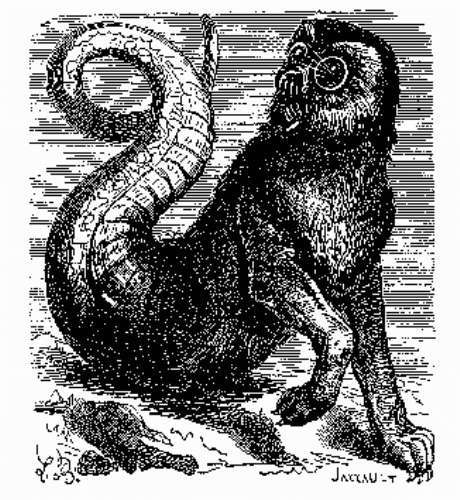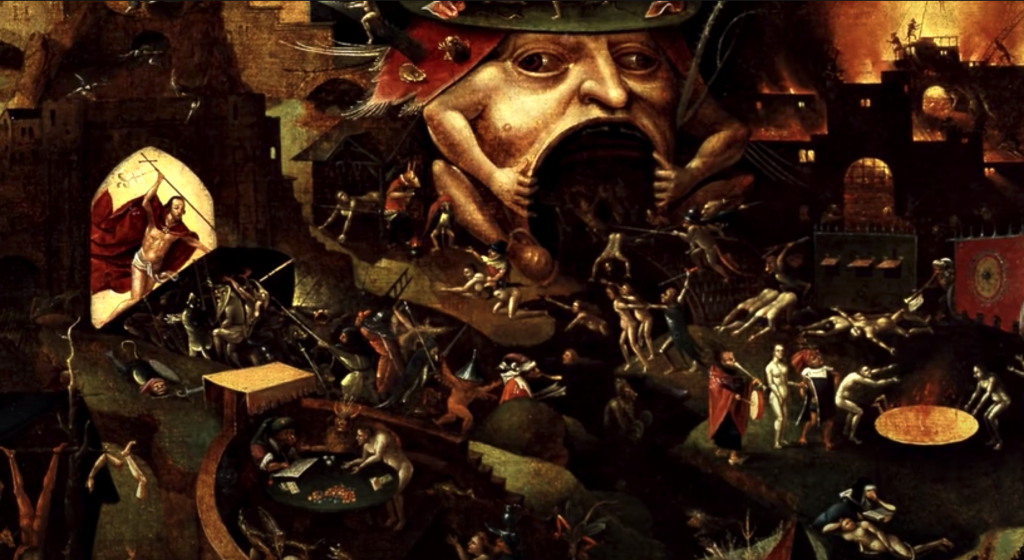Aamon is an ancient demon who has many shapes and over the centuries he has been written about he has many different influences and dark abilities. He is a personal assistant of Ashtaroth (Ashtaroth was a demonic goddess). He is one of four personal assistants of the demon goddess Ashtaroth.
Date of Discovery
The earliest known written record of Aamon is dated to 1583.
Name

Aamon is also known by Amon, and Amun. His name means “who induces to eagerness.” Aamon’s name scores a number 9 on Chaldean numerology. Chaldean numerology is a system that identifies one’s true self based on a mix of their birthdate and/or legal name. A number 9 represents a personality that is an enforcer of Karma and Justice.
Physical Description
At times he appears with a wolf’s body and a serpent’s tail, in which shape he can breathe fire–at other times, he appears with a man’s body, with a raven’s head that possesses a set of dog’s teeth. This description, of course, varies in different sources.
Origin
According to the Dictionnaire Infernal written by Collin de Plancy in 1818, Aamon commands forty legions of demons and carries the title of prince.
Also related to the primary Egyptian God Amon or Amun.
He is also Associated with the God Baal Hammon who was a weather god, and the king of gods, in Ancient Carthage. It is said that people would burn their children as offerings to Baal Hammon in hopes for prosperous weather.

Mythology and Lore

He is found in any Abrahamic religion (Judaism, Christianity, Islam etc..)
His father is a God and mother is Asherah. Asherah is the wife of God and mother of all Demons in ancient semitic religions.
Christian demonology states that he holds the most power during day time. He has psychic powers that allow him to know the power of his enemies and detect those nearby. He can extend spikes from his wrists, tail, and wings that can cut through any organic material. He can fire off powerful energy bolts that gradually build in power. He can extend his limbs and breathe underwater. It is speculated that he has even more power than this.
He makes men and women fall in love with each other, and he settles disputes between friends and enemies.
Grand Grimoire
Excerpt from Pseudomonarchia daemonum by Johann Wier in 1583
“Amon, or Aamon, is a great and mighty marques, and commeth abroad in the likeness of a Wolf, having a serpents tail, [vomiting] flames of fire; when he putteth on the shape of a man, he sheweth out dogs teeth, and a great head like to a mighty [night hawk]; he is the strongest prince of all other, and understandeth of all things past and to come, he procureth favor, and reconcileth both friends and foes, and ruleth forthy legions of devils.”
Excerpt from The Goetia by S.L. MacGregor Mathers
“The Seventh Spirit is Amon. He is a Marquis great in power, and most stern. He appeareth like a Wolf with a Serpent’s tail, vomiting out of his mouth flames of fire, but at the command of the Magician he putteth on the shape of a Man with Dog’s teeth beset in a head like a Raven; or else like a Man with a Raven’s head (simply). He telleth all things Past and to Come. He procureth feuds and reconcileth controversies between friends. He governeth 40 Legions of Spirits. His Seal is this which is to be worn as aforesaid, etc.”
You think me a savage beast? Unlike you, I preside over forty legions of squabbling beasts, thirsty for gore and viscera. Whatever your position is, I am a mountain to your anthill.
Aamon
Is there anything we missed about Aamon? Let us know in the comments section below!

Tritone’s love of horror and mystery began at a young age. Growing up in the 80’s he got to see some of the greatest horror movies play out in the best of venues, the drive-in theater. That’s when his obsession with the genre really began—but it wasn’t just the movies, it was the games, the books, the comics, and the lore behind it all that really ignited his obsession. Tritone is a published author and continues to write and write about horror whenever possible.
